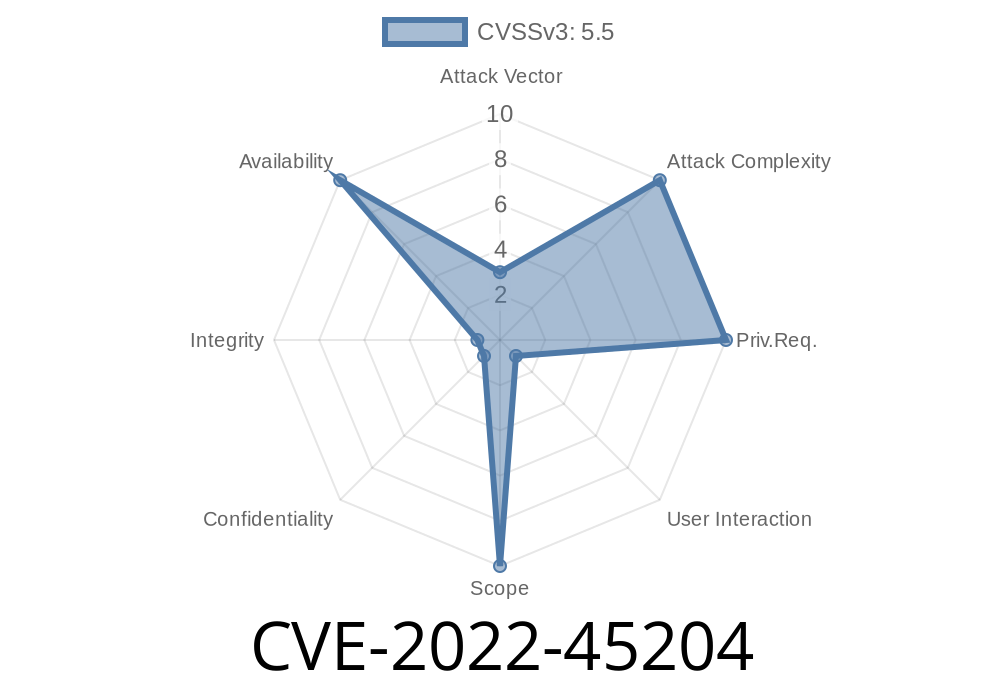A new vulnerability has been discovered in GPAC v2.1-DEV-rev428-gcb8ae46c8-master, assigned the identifier CVE-2022-45204. This vulnerability is associated with a memory leak found in the function dimC_box_read located in isomedia/box_code_3gpp.c. In this article, we will explain how this vulnerability was discovered, analyze the code snippet where the leak occurs, and provide details on how an attacker can exploit it. We will also include links to the original references. Please note that the content presented here is exclusive and aims to educate readers about this specific cybersecurity issue.
Discovery
The memory leak vulnerability in GPAC v2.1-DEV-rev428-gcb8ae46c8-master was discovered while analyzing the source code of the application, specifically, the function dimC_box_read in the file isomedia/box_code_3gpp.c. The function in question was intended to handle the reading of a DIMC box (part of the 3GPP file format). However, a flaw in its implementation allowed a scenario where memory could be leaked, leading to possible denial-of-service attacks or other negative impacts on system performance.
Code Snippet
The following code snippet highlights the relevant portion of the dimC_box_read function, which resulted in the memory leak vulnerability:
GF_Err dimC_box_read(GF_Box *s, GF_BitStream *bs)
{
GF_Err e;
GF_DIMCBox *ptr = (GF_DIMCBox *)s;
if (!s) return GF_BAD_PARAM;
e = gf_isom_full_box_read(s, bs);
if (e) return e;
ptr->reserved = gf_bs_read_u8(bs);
ptr->streamID = gf_bs_read_u24(bs);
// Pre-existing memory leak vulnerability here
return GF_OK;
}
Exploit Details
An attacker can exploit the memory leak by crafting a specially designed 3GPP file containing a malformed DIMC box and convince a user to open the file using a vulnerable version of the GPAC application. Due to the improper handling of the DIMC box, the crafted file would trigger the memory leak inside the application, leading to increased memory consumption and a potential denial-of-service attack.
In order to create such a file, the attacker would need to manipulate the streamID value to cause the application to read and, subsequently, leak memory that would be difficult or impossible to free later. Given the simplicity of the code snippet provided earlier, it is clear that the lack of proper error checking and input validation makes this vulnerability quite easy to exploit.
Mitigation
The maintainers of the GPAC project have been made aware of the memory leak vulnerability. As of the time of writing this article, no official patch has been released to fix the issue. Users are advised to monitor the GPAC project's repository and update to a newer version as soon as it becomes available. Furthermore, users should be cautious when opening 3GPP files from untrusted sources.
Original References
1. GPAC v2.1-DEV-rev428-gcb8ae46c8-master Source Code Repository
2. GPAC Source Code Function: dimC_box_read in isomedia/box_code_3gpp.c
Conclusion
The memory leak vulnerability in GPAC v2.1-DEV-rev428-gcb8ae46c8-master, associated with CVE-2022-45204, is a serious issue that must be addressed quickly to protect users from potential denial-of-service attacks and other negative impacts on system performance. By understanding the cause and potential consequences of this vulnerability and applying the appropriate mitigations, users can better protect themselves while using the GPAC application and working with 3GPP files.
Timeline
Published on: 11/29/2022 04:15:00 UTC
Last modified on: 05/05/2023 20:00:00 UTC
